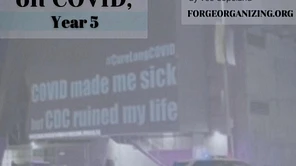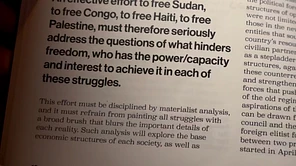"I came to realize the obvious: the subject of the dream is the dreamer. The fabrication of an Africanist persona is reflexive; an extraordinary meditation on the self; a powerful exploration of the fears and desires that reside in the writerly conscious. It is an astonishing revelation of longing, of terror, of perplexity, of shame, of magnanimity. It requires hard work not to see this.” - Toni Morrison
***
Imagine.
Me, an eager and tenacious 25 year old from North Las Vegas, a Cheyenne HS alumni (at the time one of the worst rated high schools in CCSD, which is also consistently rated the second worst educational system in the United States) sitting in professor SA Smythe’s Blackness and Borderscapes class in the second year of my doctoral studies at UCLA.
They said this was my ancestors wildest dreams. But how could they really know?
***
Professor Smythe required us to read all of Toni Morrisons Playing in the Dark: whiteness and the literary imagination before our first class. This book changed the trajectory of my entire PhD. (I am truly indebted to Prof. Smythe for really shaping my PhD experience). I bring this up today because I have been reading Ruha Benjamin’s “Imagination“, for a book club, and it’s surfaced a few core memories. So though this is not necessarily a review of the first chapters of “Imagination” per se, it is about where the text is taking me. As I learned in Smythe’s class it’s important to read across texts, disciplines, and genres and sometimes concurrently. Notably, in the same quarter that we read Morrison we also studied Alexis Pauline Gumbs “Spill”, which is not only a phenomenal example of how to read across texts but also an excellent guide on how to imagine and engage in new citation practices. It’s with these foundational practices that I am thinking through this reflection.
Reading the first two chapters of “Imagination” reminded me of reading “Playing in the Dark” for the first time. It may sound so silly, but coming from a STEM undergraduate degree, I never realized that the current state of the world was influenced by the white imagination. Of course I have been fully aware of racism and misogynoir, but never did I actually recognize this as the conglomeration of ideas, the figment of someone’s imagination. That these things were dreamed up, which also makes them exceedingly fallible. Knowing this did not make systems and people feel less dangerous, but it made them feel more possible to change, destroy, or render unusable. I started recognizing this in everything I studied, in everything I existed in. I’m very serious when I say that I mention imagination in almost every talk I do. This video embedded is a talk with the transgender law center about mandatory reporting (relevant clip starts around 55:15).
What was really important about Morrisons text for me was how she completely shifted my perspective on gaze. It’s as if she added new sets of binoculars to my collection. Or unlocked new realities within my interplanetary map. It was Morrison who helped me recognize the importance of understanding the ways blackness is portrayed through the white gaze and through language, and how that language alters the very real existence of structures and systems. In many ways practicing this type of analysis necessitates a look into what is as much as what isn’t, and consequently how both what is and “isn’t” there leads to a map — a map not as in just a location finder, but as in a guide to know how, and why, and when, and where. Because of Morrison I pay attention to the loud silences, the representation(s) of the portrayer and not just the portrayed, and how these representations relate to one another. This way of seeing allows the distortions to become more visible, more tangible in a way that is hard to ignore (as Morrison so eloquently describes in the quote above).
In “Playing in the Dark” Morrison says,
“Earlier I said that cultural identities are formed and informed by a nation's literature, and that what seemed to be on the "mind" of the literature of the United States was the self-conscious but highly problematic construction of the American as a new white man”.
She adds,
“I want to suggest that these concerns— autonomy, authority, newness and difference, absolute power-not only become the major themes and presumptions of American literature, but that each one is made possible by, shaped by, activated by a complex awareness and employment of a constituted Africanism. It was this Africanism, deployed as rawness and savagery, that provided the staging ground and arena for the elaboration of the quintessential American identity.”
Here we see that without the portrayal of a “barbaric” or monstrous “other”, the development of the American identity and some may add the “American dream” or even “manifest destiny” would have crumbled. It is upon this self-consciousness, fear, and simultaneous longing of said other that the New World was imagined, and how its capitalistic structure was formed. Yet although relentless it is not indestructible. And although Benjamin cites Berrys ideas on “Old stories” in her first two chapters, Octavia Butler (whom I jokingly refer to as prophet) described something that bends these dichotomous renderings of time — that is old versus new. The reverberations created from the past are patterned, like an echo, and elucidate what the future could be if or when dictated by these oppressive imaginaries. Despite this sounding defeatist or hopeless, Butler tells us that “…the very act of trying to look ahead to discern possibilities and offer warnings is in itself an act of hope”. We do better when we know better, and reading these texts helps us get there.
Something that also came to mind while reading these chapters and thinking through imaginations, was how other historical forms of fictive literature (not just skewed news headlines but literally fiction genres) created by the white imaginary become real world atrocities. Ideas turned reality, born from the imaginations of fear mongerers and money hoarders. As Ellen Samuels points out in Fantasies of Identification”, Mark Twains “Pudd’nhead Wilson” led to the idea that fingerprinting could be used to “delineate the different identities of racially ambiguous subjects” and has been quoted as fact (alongside the fake Will West story) in forensic textbooks and criminal cases! Samuel’s says “…we see that the blurring of truth, imagination, and desire in the West story is not an aberration in the story of modern identification but rather its defining feature”. It is appalling to me that these imagined scenarios became so easily living nightmares.
***
Imagine.
Me, a young 29 year old graduating with a PhD and three months later becoming bedbound with no ability to walk or talk due to a relentless pandemic and corrupt federal public health system. I live in the echoes of my ancestors worst nightmares.
***
Morrison opened a door to many other Black thinkers and Professor Smythe walked me to that door. Isn’t it beautiful when our dreams lead to doors? I mentioned earlier that Morrisons essays helped me shift my perspective on gaze. It is upon this foundation that I began to read Simone Brownes “Dark Matters”, which is also where this journey through Benjamin’s first two chapters took me. There’s too much to say about Dark Matters, but this is another seminal piece that I consistently use in my personal work. It has helped me understand how to better articulate sites, processes, and systems that perpetuate or give capacity for/to racializing surveillance. Because of Browne I'm more concerned with the watchers, the watched, and all of the relations that tie the two together. Importantly in “Dark Matters” Browne conceptualized the term "dark sousveillance" which she describes as “a way to situate the tactics employed to render one's self out of sight, and strategies used in the flight to freedom from slavery as necessarily ones of undersight”. She goes on to say,
“Dark sousveillance, then, plots imaginaries that are oppositional and that are hopeful for another way of being. Dark sousveillance is a site of critique, as it speaks to black epistemologies of contending with anti black surveillance”, and that it “…charts possibilities and coordinates modes of responding to, challenging, and confronting a surveillance that was almost all-encompassing…”.
My dissertation ended with a chapter on abolitionist steps towards ending family policing and surveillance based on this concept. One thing that people in our community conversations mentioned was that the carceral system and its workers, both the child maltreatment investigators and the police, all had prescriptive processes to deal with violence that not only perpetuated further harm but that also contributed to the lack of creative solutions able to be used by the community. Because people have to rely on (by force or by habit) carceral approaches to violence intervention (dreamed up by our oppressors) our ability to both flex and experiment with our own imaginative restorative and creative approaches to harm reduction are significantly impacted — even if they’re also co-opted by said institutions. I say this to say that it’s important when we think about dark sousveillance, radical imaginations, and collective imagination to remember that we are fighting against people that know just how powerful our imaginations are. It is not just about flipping the script on our adversaries but also finding new ways to remain elusive, new ways to take bold action, and with this also finding new ways to love ourselves and remind ourselves that we are powerful and so are our dreams.
***
Imagine.
Me being here at 31 still here, still able to write about it, still fighting every system in my way, and still working to formulate my words into a piece of text relatable to those of us traversing, or floating, through the shadowlands. Every day as a disabled Black and Filipino person requires a radically different imagination. The disabled, queer, black, trans, indigenous experience alters the “normative” reality. On paper we are mutants, anomalies, statistical outliers, control variables, monstrosities. We are the spotlight. We are the invisible rays. We are beyond capture and yet the net is wide. The enclosures are constantly shifting to find the traces of us, and the traces remain. We create new realities every day because our experiences require it. Our existence is incompatible with life as is, life as "Man". And sometimes it is too much to bear. Sometimes it’s wonderful to be elusive. Sometimes it’s beautiful to imagine. Sometimes we have to turn our words, our floating thoughts, our dreams into fruition. Collective study and our communal imagination is the way through.
---
Bluesky: @vashetc
Digital CV: veephd.blog






